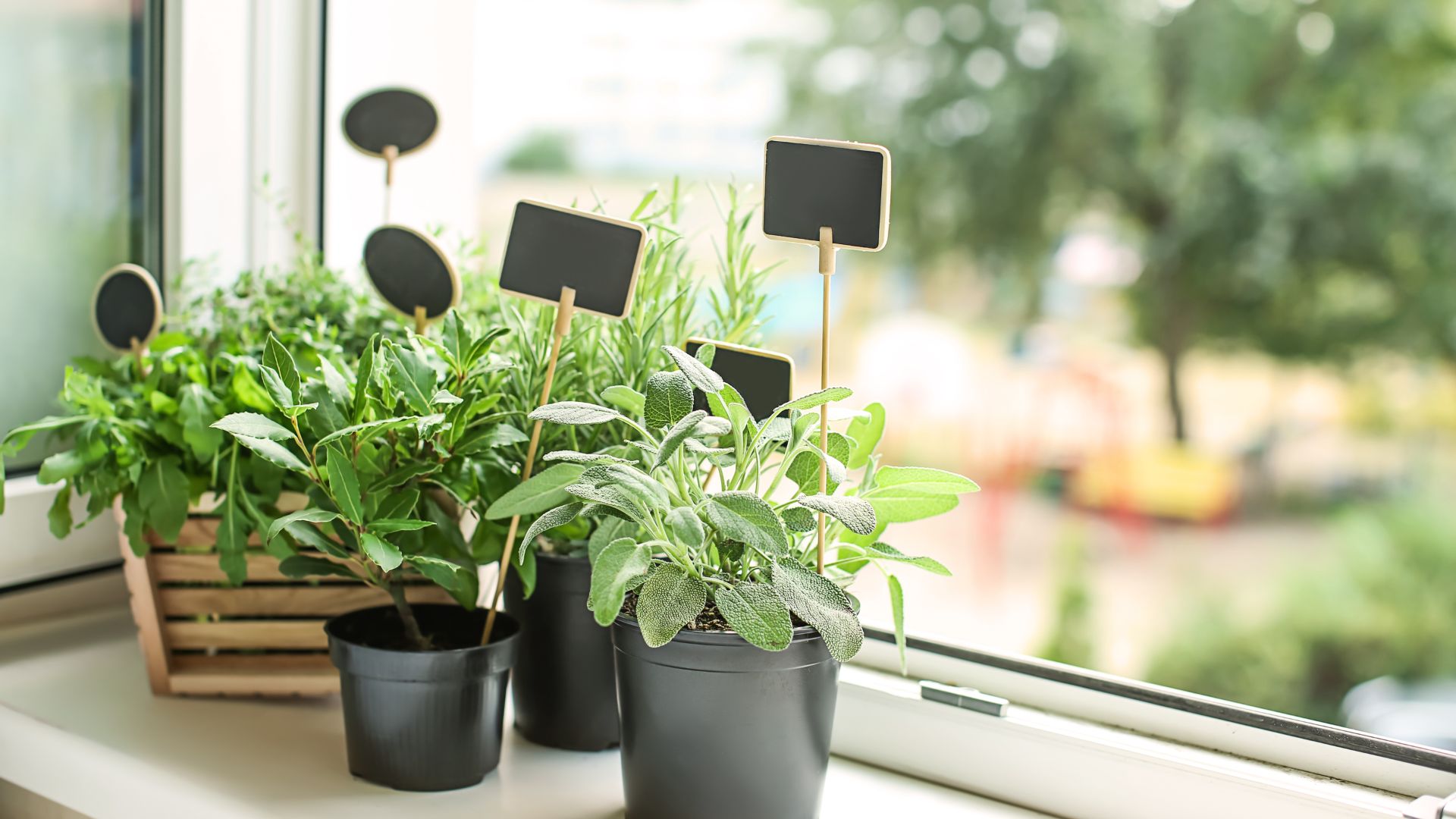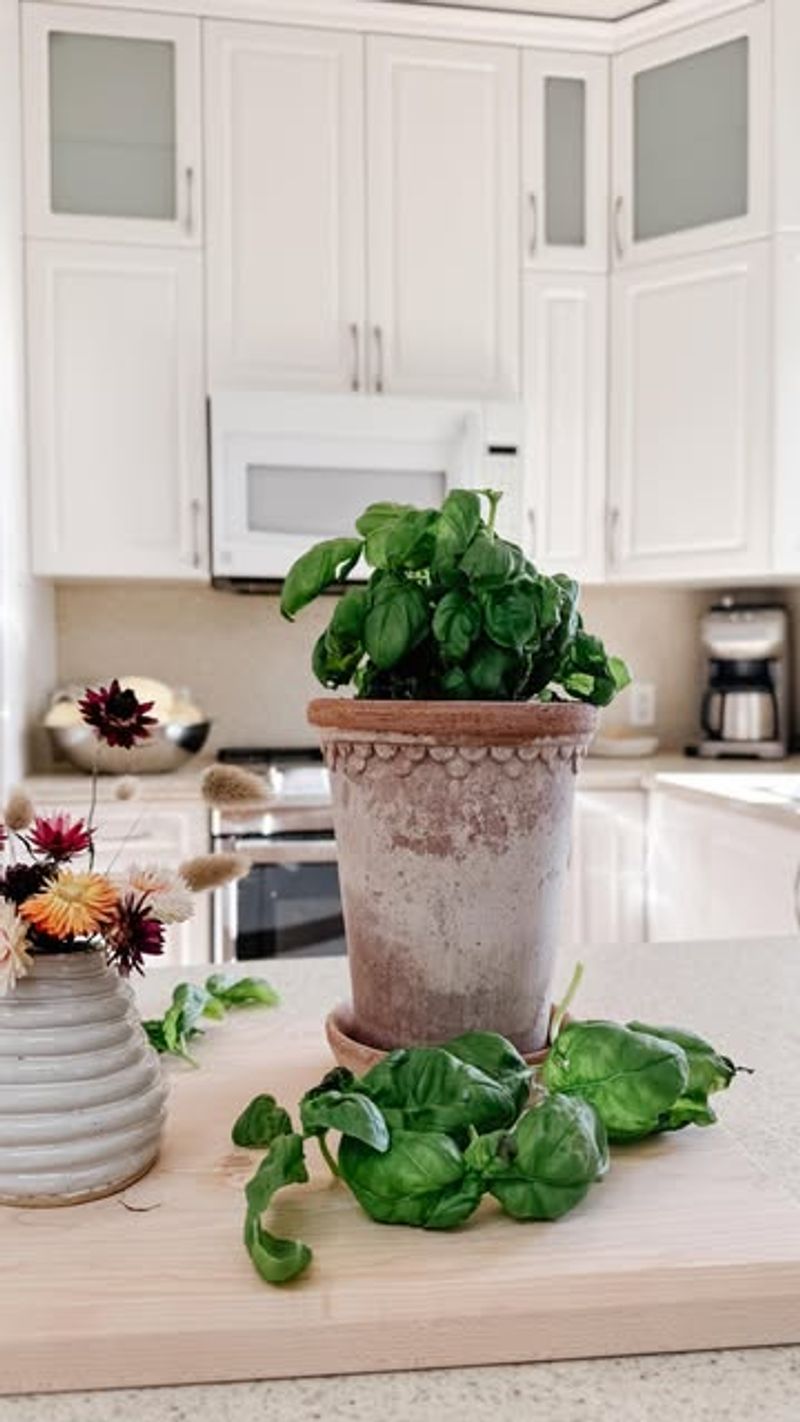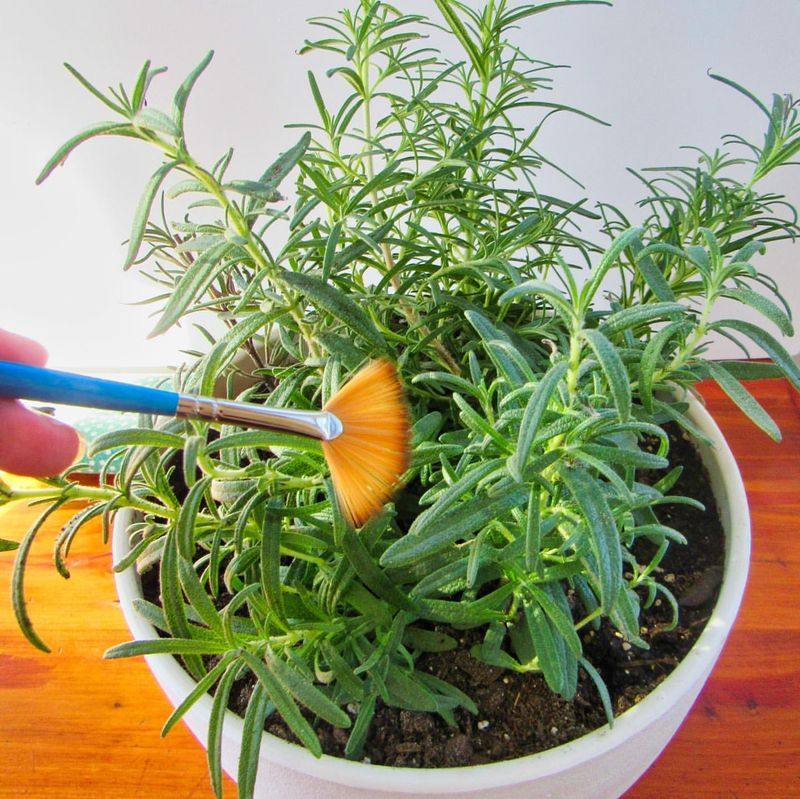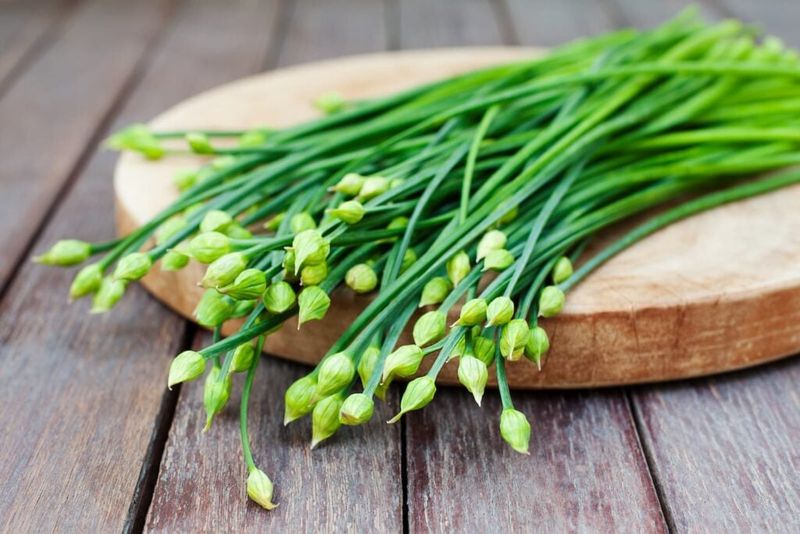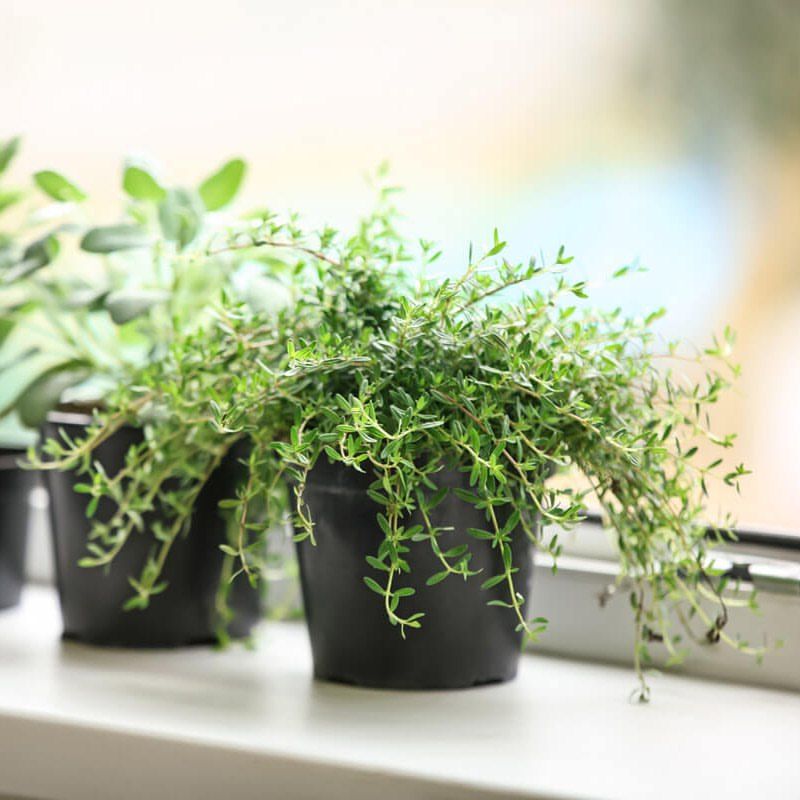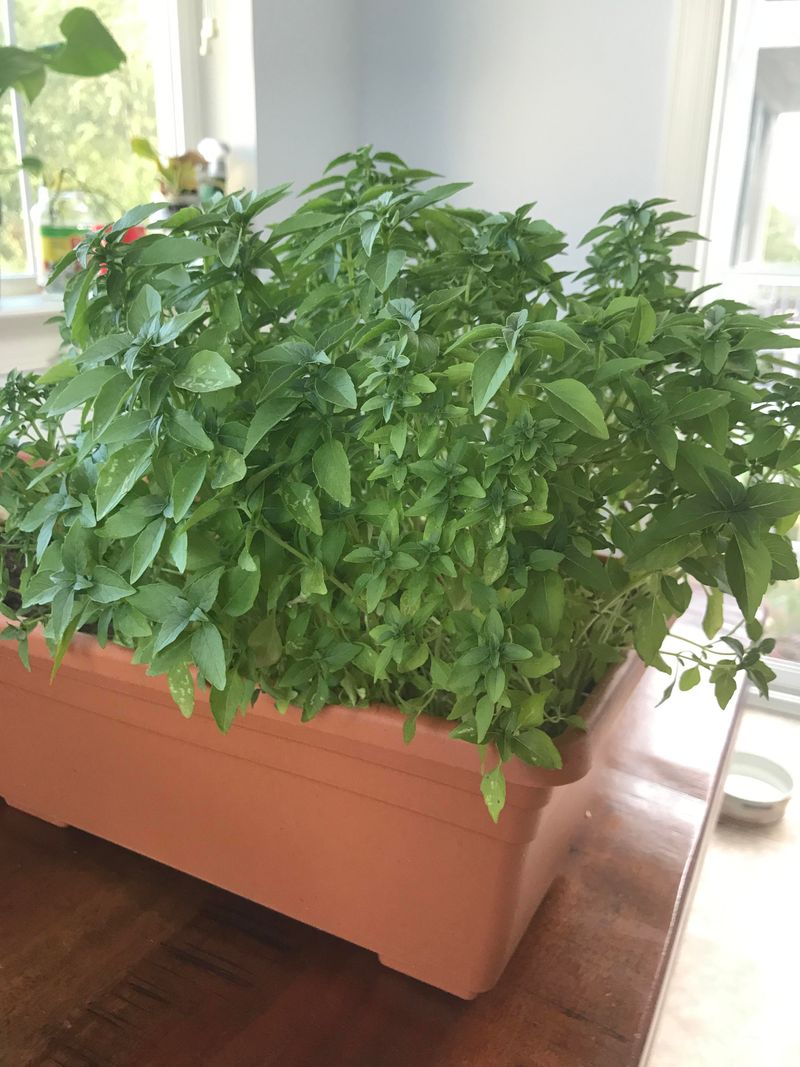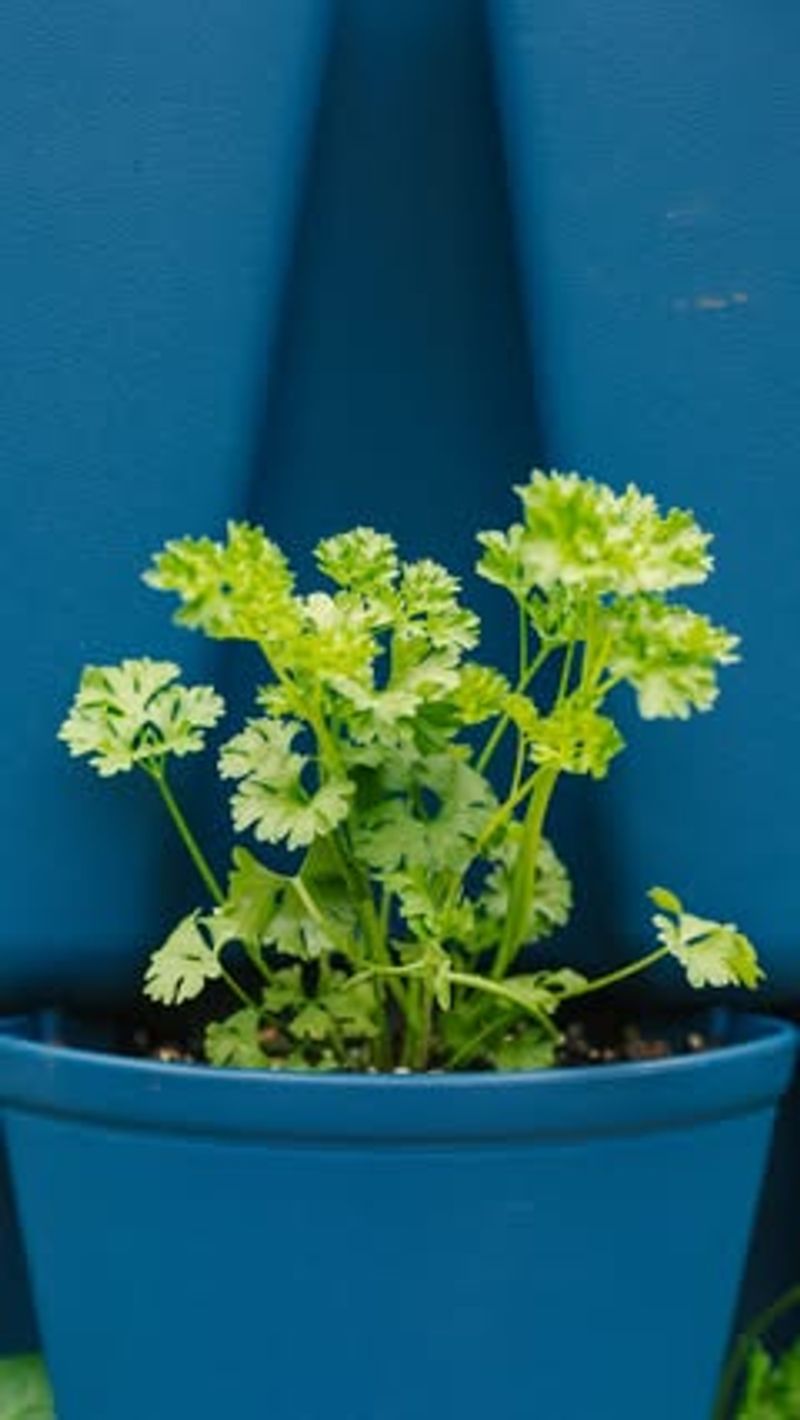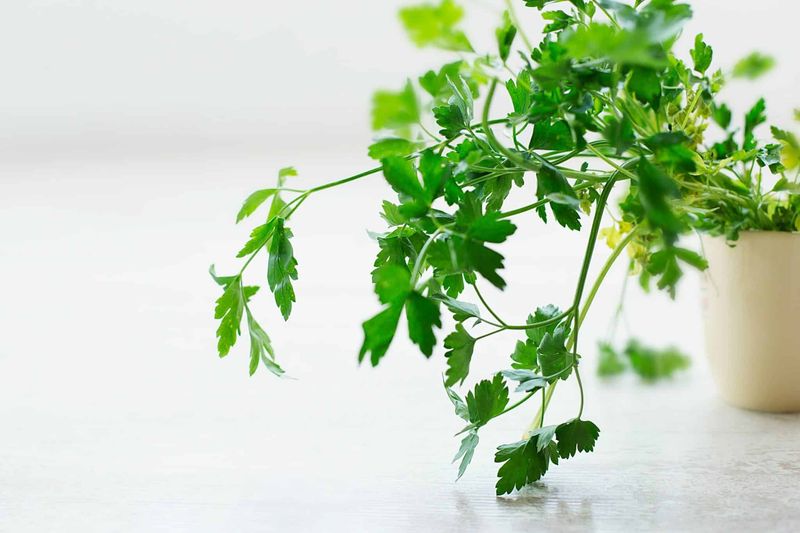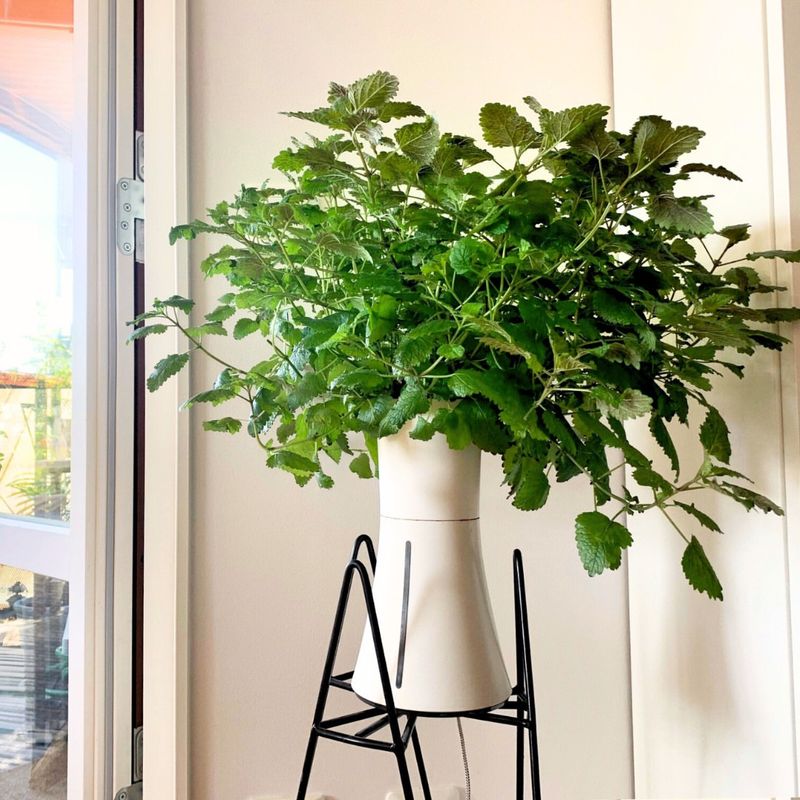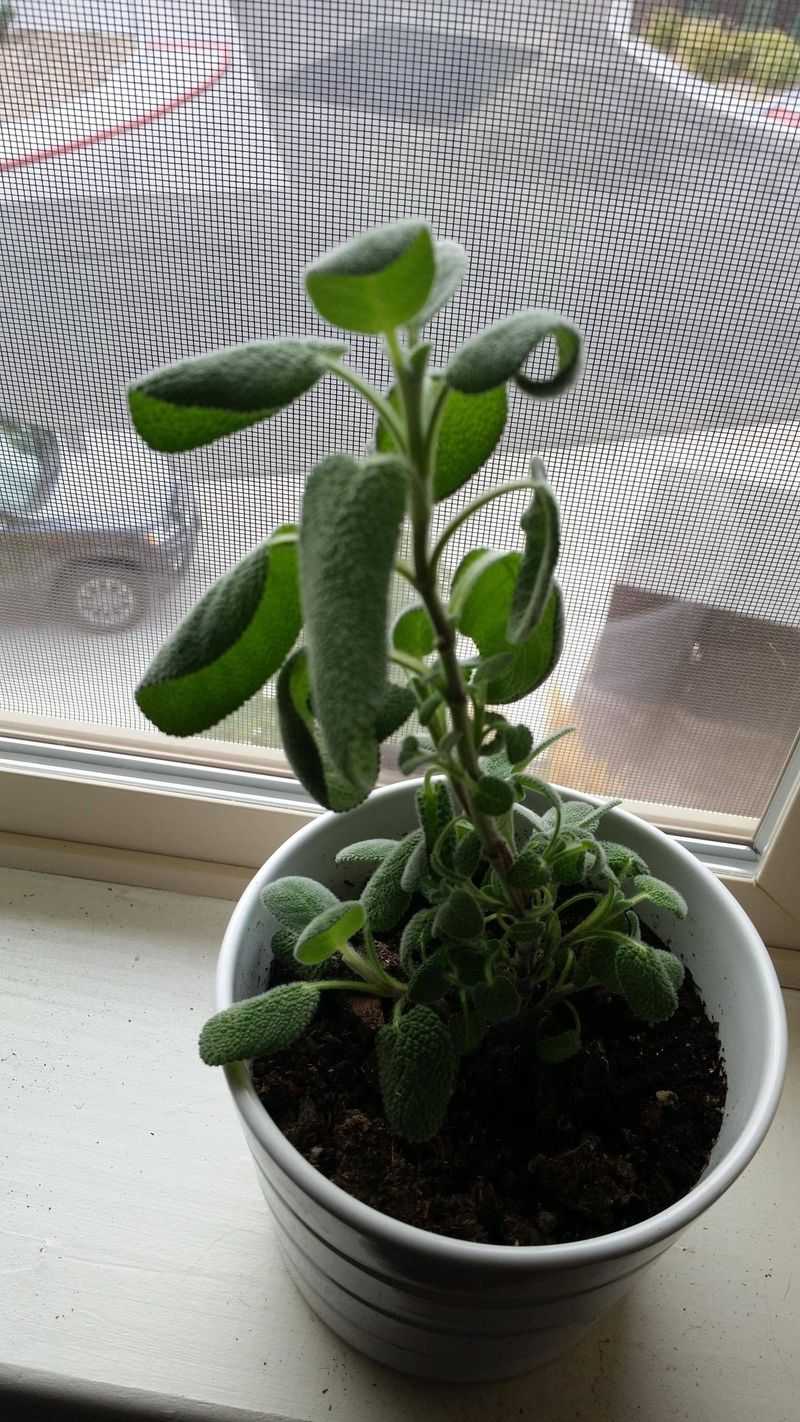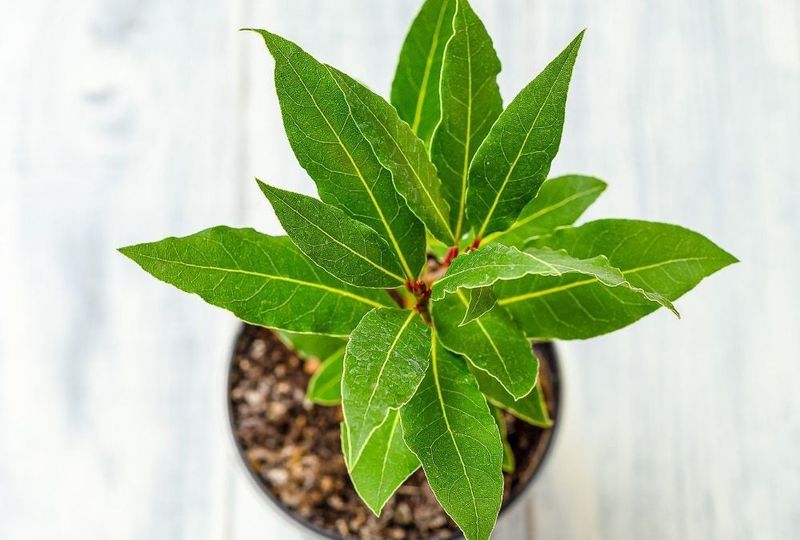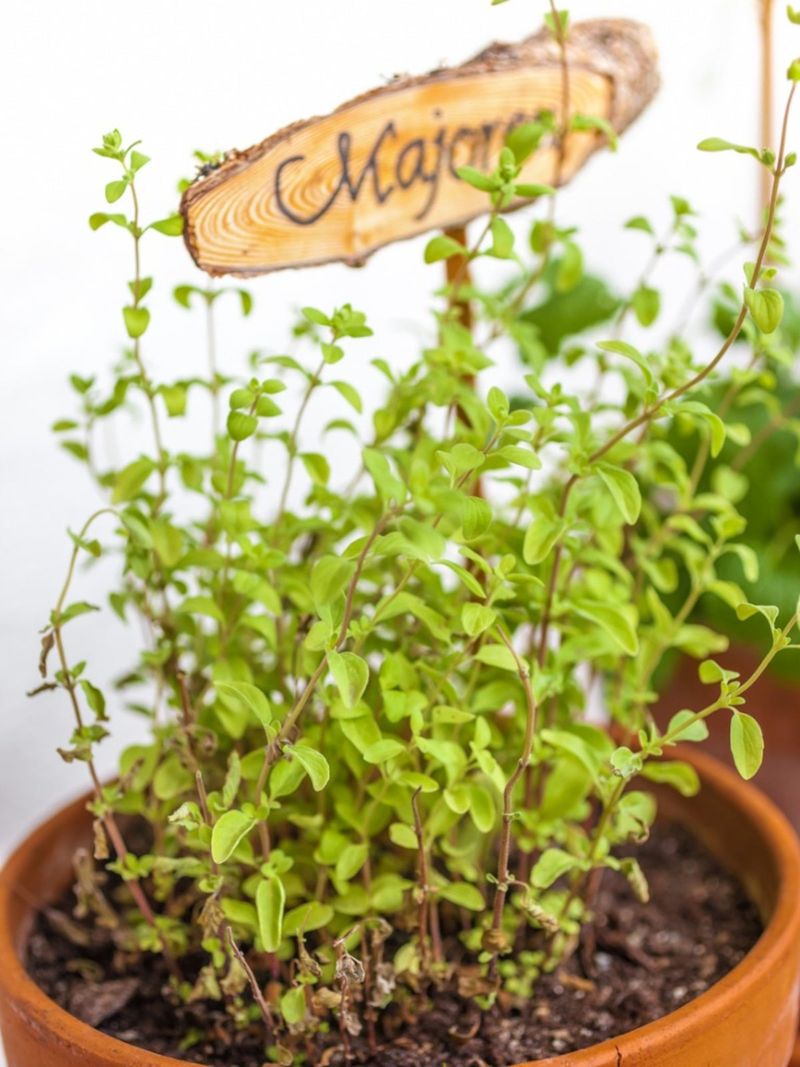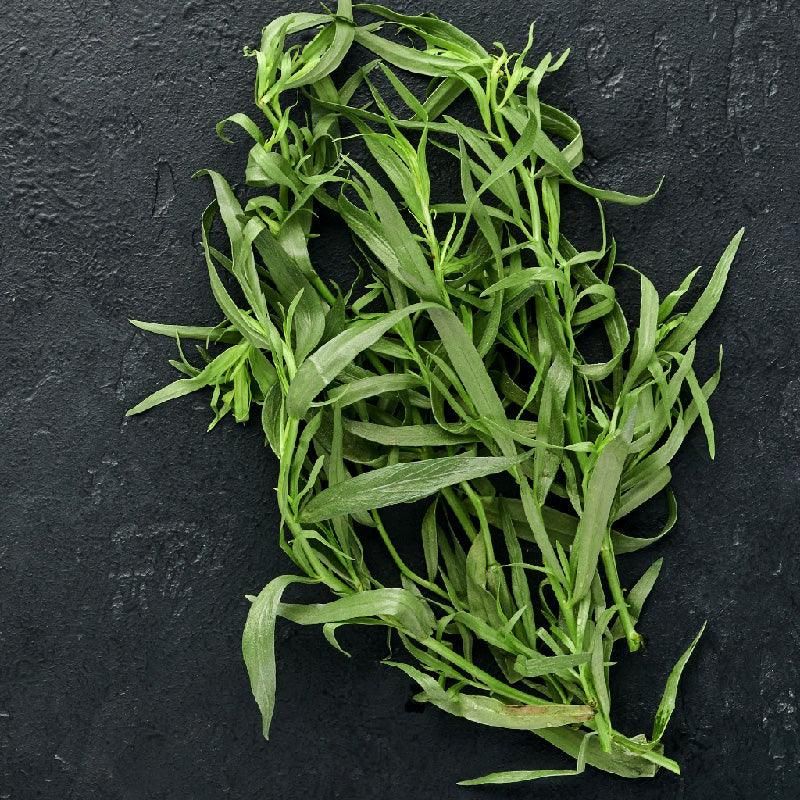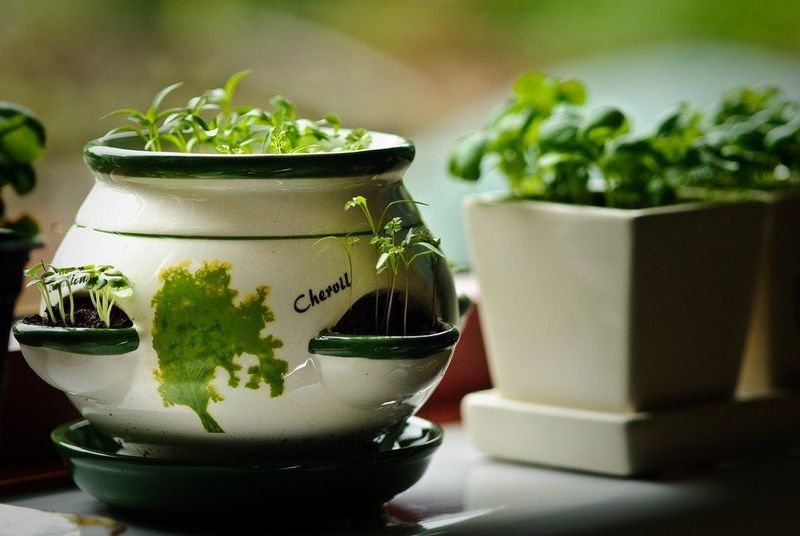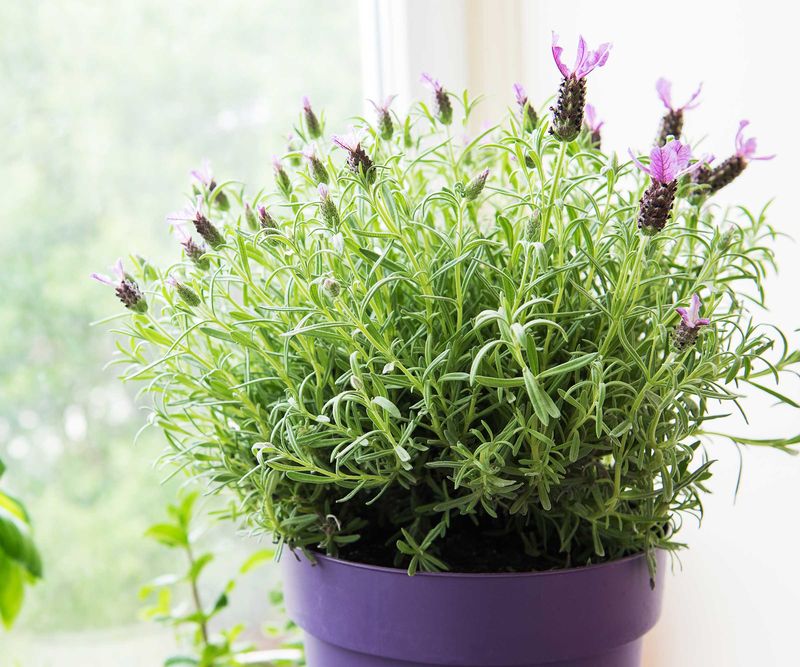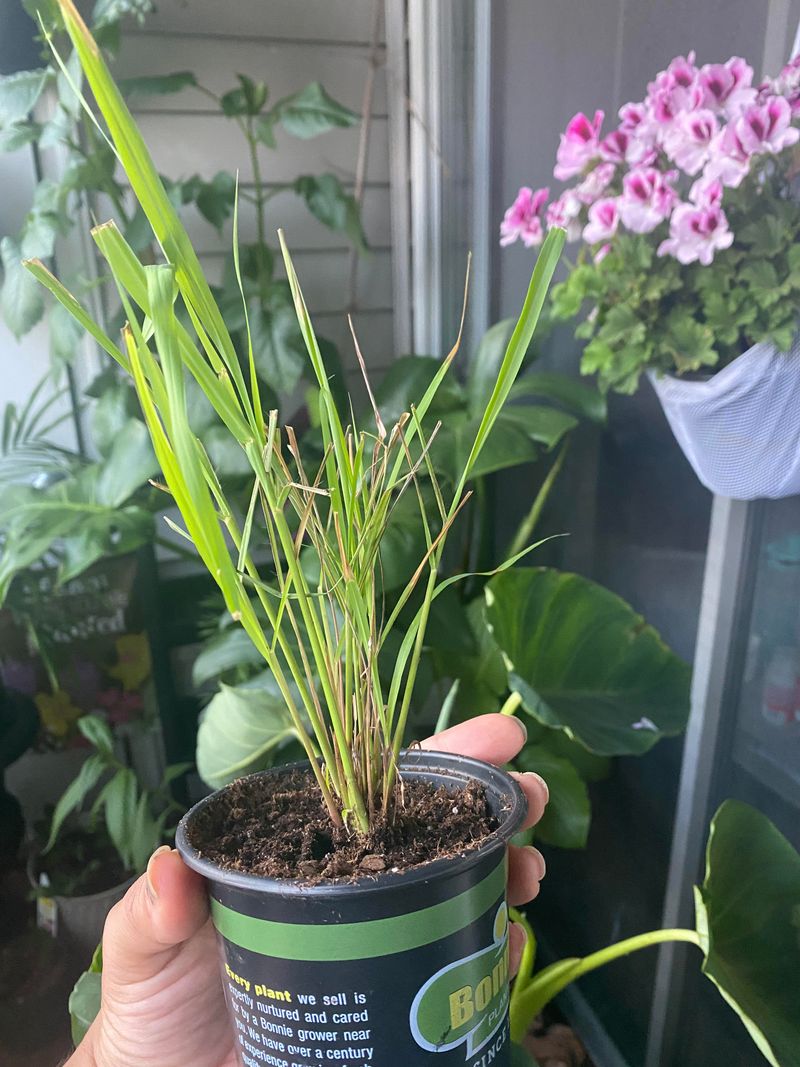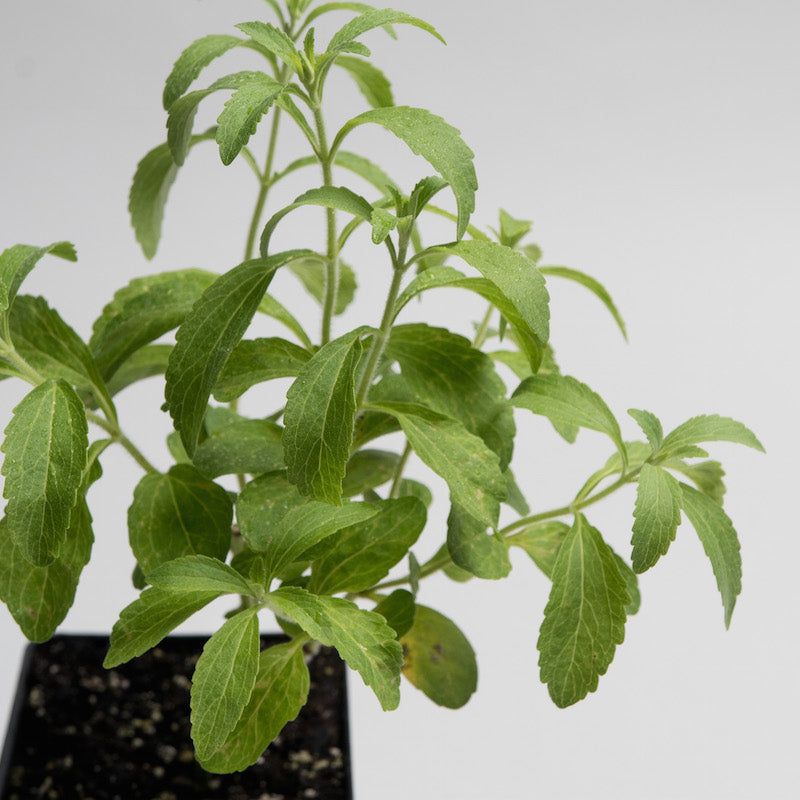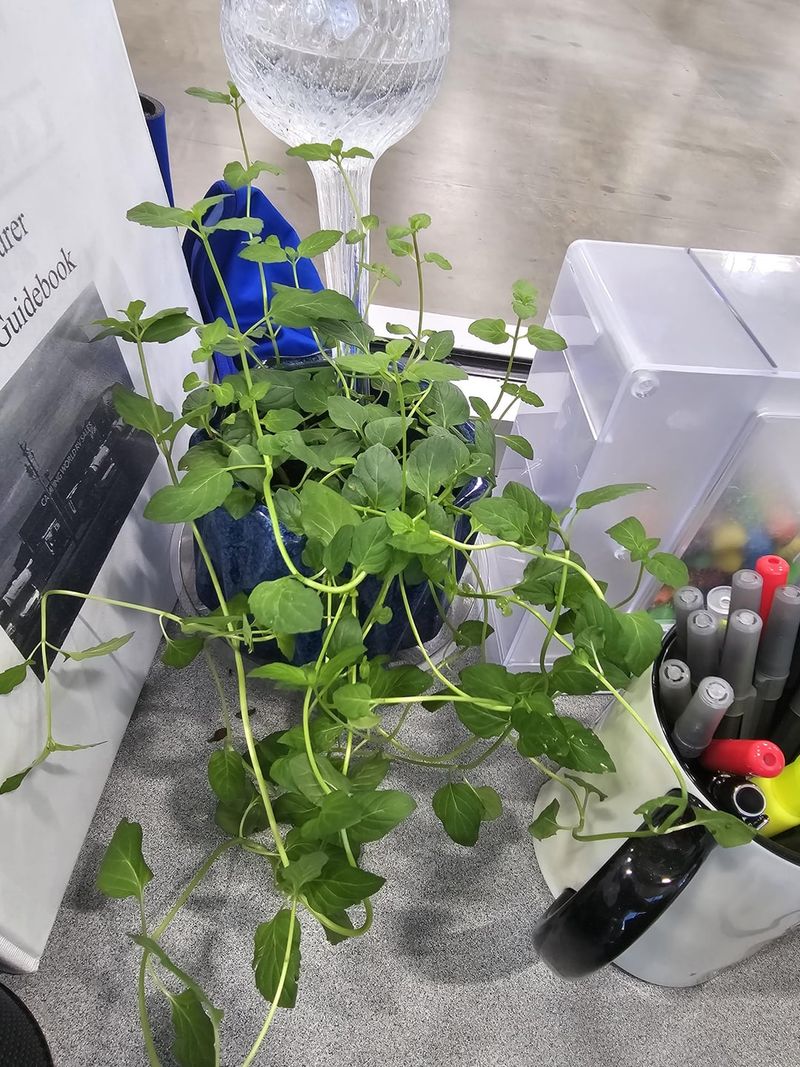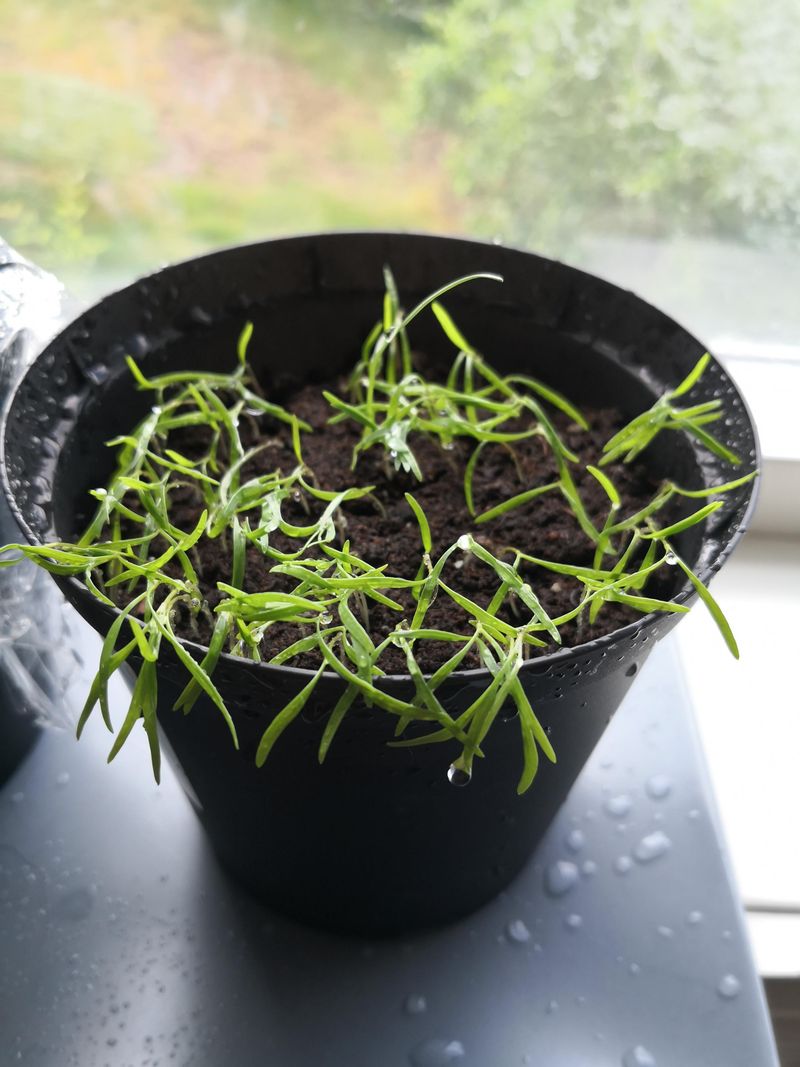Growing herbs indoors is a Minnesota tradition that keeps kitchens lively and fragrant, even when snow blankets the ground. I started my indoor herb garden out of necessity—those long winters leave our outdoor beds frozen and silent for months.
It’s become a cozy ritual that brings life inside when everything outside is asleep. Minnesota’s climate throws some serious curveballs at year-round gardeners, with subzero temps and limited winter sunlight. But a sunny windowsill or a few grow lights can work wonders. They help us stay connected to our gardening roots, no matter what the weather’s doing.
Over time, I’ve discovered that some herbs actually thrive in our indoor conditions. They don’t mind the dry air from heating systems and ask for very little in return. In exchange, they offer fresh, vibrant flavors that lift our spirits and our meals during the darkest days.
1. Basil
Nothing beats the aroma of fresh basil leaves when the outside world is covered in snow. Growing well in south-facing windows, this Mediterranean favorite needs at least 6 hours of bright light daily to thrive in Minnesota homes.
I keep mine in well-draining soil and water only when the top inch feels dry. The secret to bushy plants is regular harvesting – pinch those top leaves to encourage branching. Perfect for homemade pesto even when the temperature outside reads negative twenty!
2. Mint
Hardy and almost impossible to kill, mint brings freshness to hot chocolate during Minnesota’s frigid winters. Unlike outdoor mint that takes over gardens, container-grown mint stays perfectly behaved while providing aromatic leaves year-round.
Water regularly but don’t overdo it – mint likes consistently moist soil but not soggy roots. My favorite trick is growing spearmint in a hanging basket near a kitchen window, where its cascading tendrils add greenery during those long winter months when everything outside looks monochrome.
3. Rosemary
Resembling a miniature Christmas tree, rosemary brings evergreen cheer to Minnesota kitchens all year. This Mediterranean herb craves sunlight but tolerates our dry indoor winter air surprisingly well, making it perfect for sunny spots in northern homes.
The woody stems and needle-like leaves add flavor to winter comfort foods like roasted potatoes and hearty stews. A terra cotta pot helps prevent root rot – the biggest threat to indoor rosemary. Mine thrives in a south-facing window where it receives maximum light during short winter days.
4. Chives
Practically maintenance-free, chives bounce back even after neglect – perfect for busy Minnesota households. Their slender green shoots provide mild onion flavor year-round, brightening everything from morning eggs to baked potatoes.
Simply snip what you need and they’ll regrow quickly. During our darkest winter days, I move mine closer to windows or under grow lights to prevent stretching. The bonus? In spring, you can divide indoor chives and transplant some outdoors when the ground thaws, creating a continuous chive supply regardless of season.
5. Thyme
Low-growing and compact, thyme fits perfectly on narrow Minnesota windowsills where space is premium. Its tiny leaves pack tremendous flavor while requiring minimal care – just bright light and occasional watering when soil feels dry.
During winter, I place mine in south-facing windows where it soaks up precious sunlight. The woody stems stand up well to our dry indoor heating season. Several varieties work well indoors, but I’ve found English and lemon thyme particularly adaptable to Minnesota’s indoor growing conditions.
6. Oregano
Surprisingly drought-tolerant, oregano forgives forgotten waterings during hectic Minnesota holiday seasons. Its Mediterranean heritage means it actually prefers drier conditions, making it ideal for homes with forced-air heating that dries out the air.
A south-facing window provides enough light to keep leaves flavorful throughout winter. The compact growth habit means one plant yields plenty for cooking.
My oregano plant has survived three Minnesota winters indoors, becoming increasingly woody and productive each year – proof that some herbs actually improve with age.
7. Parsley
Far more than just a garnish, parsley brings fresh green flavor to winter cooking when Minnesota gardens lie dormant. The flat-leaf variety generally performs better indoors than the curly type, offering stronger flavor and more robust growth.
Parsley appreciates cooler indoor spots away from heating vents, making it perfect for bright Minnesota kitchens that naturally stay cooler than living spaces. Keep soil consistently moist but not waterlogged.
My parsley thrives in an east-facing window where it receives gentle morning light but avoids intense afternoon sun.
8. Cilantro
Fresh cilantro brings summer salsa vibes to Minnesota winters, brightening meals when outdoor gardening seems like a distant memory. Unlike many herbs, cilantro actually prefers cooler temperatures, making it well-suited to indoor growing in northern climates.
The trick is consistent moisture and moderate light – an east-facing window works perfectly. I sow seeds every few weeks for continuous harvest, since individual plants complete their lifecycle relatively quickly.
During January’s coldest days, freshly chopped cilantro on chili reminds me that gardening season will eventually return.
9. Lemon Balm
Citrusy and bright, lemon balm lifts spirits during Minnesota’s darkest winter days. Its refreshing scent alone makes it worth growing, releasing mood-boosting fragrance whenever leaves are touched or harvested.
This member of the mint family grows vigorously even in less-than-ideal light conditions. Regular pinching prevents legginess during winter’s short daylight hours.
I keep mine in a cool room with bright indirect light and make calming tea from the leaves when winter blues hit – a perfect antidote to Minnesota’s long nights.
10. Sage
Velvety gray-green leaves bring textural interest to indoor herb collections while Minnesota’s landscape turns monochrome. Sage’s drought tolerance makes it forgiving of occasional neglect during busy winter schedules.
A terracotta pot promotes proper drainage and prevents root rot – sage hates wet feet. Place in your brightest window for best flavor development.
My plant produces enough leaves for holiday stuffing and winter roasts while adding a sculptural element to my kitchen windowsill garden, proving herbs can be both useful and ornamental during long indoor seasons.
11. Bay Laurel
Slow-growing but long-lived, bay laurel becomes a treasured kitchen companion through countless Minnesota winters. Unlike annual herbs, this woody plant develops into a small tree over years, providing aromatic leaves for soups and stews indefinitely.
Bright indirect light and protection from cold drafts keep bay happy indoors. During summer, I move mine outside to a sheltered spot, bringing it back in before first frost.
The glossy leaves maintain their deep green color even during Minnesota’s darkest months, providing welcome evergreen presence when outdoor plants are dormant.
12. Marjoram
Milder than its cousin oregano, marjoram brings subtle complexity to winter cooking when Minnesota gardens sleep under snow. The soft, gray-green leaves remain flavorful even with moderate indoor light, though they appreciate all the sunshine they can get during short winter days.
Allow soil to dry slightly between waterings – marjoram dislikes constant moisture. Regular harvesting encourages bushy growth rather than legginess.
I’ve found this herb particularly adaptable to Minnesota’s indoor conditions, thriving on a west-facing windowsill where it receives afternoon light when outdoor temperatures plummet below zero.
13. Tarragon
French tarragon brings sophisticated anise flavor to Minnesota kitchens year-round, elevating simple dishes with its distinctive taste. Unlike many herbs, it actually prefers moderate light rather than intense direct sun, making it suitable for east or west-facing windows.
The slender leaves may appear delicate but the plant itself is surprisingly resilient. Water only when soil feels dry to prevent root issues. During Minnesota’s heating season, I mist occasionally to combat dry air.
My tarragon plant has survived three winters indoors, producing aromatic leaves for chicken dishes and vinegars throughout the year.
14. Chervil
Delicate and fern-like, chervil brings French elegance to Minnesota kitchens when outdoor herb gardens lie frozen. Its subtle anise-parsley flavor enhances winter soups and egg dishes without overpowering other ingredients.
Unlike sun-loving Mediterranean herbs, chervil actually prefers cooler temperatures and partial shade, making it well-suited to north or east-facing Minnesota windows. Keep soil consistently moist but not waterlogged.
I sow seeds every few weeks for continuous harvest since individual plants complete their lifecycle relatively quickly, providing fresh herbs even during February’s coldest days.
15. Lavender
Bringing Mediterranean sunshine to Minnesota winters, lavender’s silvery foliage and occasional blooms lift spirits during gray days. While challenging indoors, compact varieties like ‘Munstead’ adapt best to container life, requiring excellent drainage and bright light.
Terra cotta pots prevent root rot – lavender’s nemesis in indoor environments. Allow soil to dry completely between waterings.
My plant resides in the sunniest south-facing window, where it receives maximum light during short winter days. The aromatic foliage releases calming scent whenever brushed against – nature’s stress relief during long northern winters.
16. Lemongrass
Tropical lemongrass brings unexpected freshness to Minnesota kitchens during the frozen months. The grassy stalks add authentic flavor to Thai curries and soups while creating a dramatic architectural element in indoor herb collections.
Surprisingly adaptable to container life, lemongrass needs bright light but tolerates our dry indoor air quite well. I keep mine in a large pot with well-draining soil, watering thoroughly when the top inch feels dry.
During winter’s darkest days, harvesting a fresh stalk for soup provides a welcome reminder of summer’s eventual return.
17. Stevia
Nature’s sweetener grows surprisingly well in Minnesota homes despite its tropical origins. The remarkably sweet leaves provide sugar-free flavoring for teas and desserts throughout winter when outdoor gardening remains months away.
Bright light prevents legginess – a south-facing window works best. Allow soil to dry slightly between waterings to prevent root problems.
My stevia plant remains compact and productive all winter, though leaf production slows during December’s darkest days. Come spring, fresh growth accelerates as daylight hours increase, providing sweet leaves for iced tea season.
18. Peppermint
Intensely aromatic peppermint thrives indoors when Minnesota gardens lie dormant under snow. Unlike some herbs that struggle with indoor conditions, mint actually seems to enjoy container life, where its normally invasive roots stay neatly contained.
Moderate light and consistent moisture keep leaves flavorful – perfect for winter teas and holiday desserts. I keep mine in an east-facing window where it receives morning light but avoids intense afternoon sun.
The cooling scent provides welcome freshness during months of closed windows and heating systems, bringing garden vibrancy to Minnesota’s indoor winter world.
19. Dill
Feathery dill brings delicate texture and distinctive flavor to Minnesota kitchens year-round. While challenging as a permanent indoor resident, succession planting provides continuous fresh fronds for winter fish dishes and homemade pickles.
Bright light prevents legginess – a south-facing window provides ideal conditions. I sow seeds every few weeks in deep containers that accommodate dill’s taproot.
During January’s coldest days, snipping fresh dill for salmon reminds me of summer gardens while snow piles up outside. The ferny texture adds welcome greenery when Minnesota’s landscape turns monochromatic.

